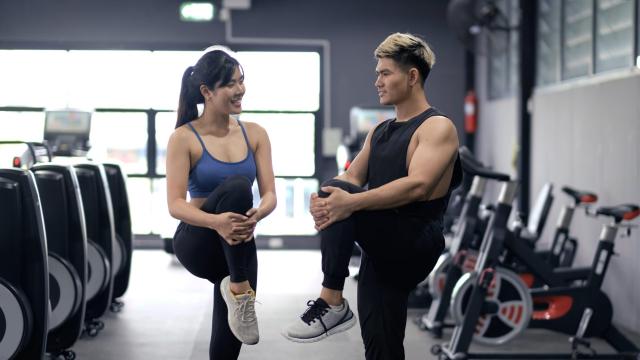A cooldown is part of every workout, in theory. Whether it’s a session with weights at the gym, or a run outdoors, you’re supposed to do some kind of slower-paced activity at the end, and maybe even stretch a little. But honestly, I don’t always have the time. And when I skip my cooldown, nothing bad happens. What gives?
To understand this, we have to look at the purposes of a cooldown. Remember from when we talked about warmups that a warmup has a few jobs? Depending on what you’re trying to do that day, you may want to get warm, stretch what needs to be stretched, practice technique, and so on. Some workouts will require all of these things. Some won’t require any. And warmups are individual, so you should make sure that your warmup gives you what you, personally, need.
Cooldowns are the same way. If you’ve been skipping them and you feel fine, there’s probably no harm in continuing your usual habits. But let’s look at a few of the jobs that a thorough cooldown accomplishes.
It helps your blood circulation
You may have heard that blood can “pool in your legs” if you don’t cool down, and that’s partially true. During exercise, your heart is pumping hard to get blood to your muscles. And the motion of your muscles helps to massage the blood back up the veins and back toward your heart. (Veins can’t contract to help pump the blood, but they do contain one-way valves, so that motion of the muscles moves it in the right direction.)
If you abruptly stop exercising, the blood in your limbs has an uphill journey, literally. Your heart has been pumping blood into your legs and arms, and now that blood has a lot less assistance for the return trip. If you’ve been stopping abruptly and you feel fine, congratulations! You have a healthy circulatory system. But the current theory on cooldowns holds that some people’s bodies have trouble managing this transition.
A gradual cooldown, bringing the heart rate slowly back to normal as you decrease the intensity of exercise, may help to prevent your chances of feeling lightheaded or faint after exercise.
It’s a great time to stretch
Static stretches (where you hold a position for, say, 30 seconds at a time) don’t always fit well into a warmup or in the middle of a workout. Intense stretching can even interfere with a strength workout. But after the workout is over, that’s a great time to stretch. Your muscles are warm, which makes them more pliable. You may be able to get into positions that are normally impossible.
And you’re already dressed in workout clothes, you’re at the gym, you know you should probably stretch more than you do…so why not?
It might help with recovery
There are a ton of purported benefits of cooldowns that are probably not true, but then again, we can’t be sure. Some athletes and trainers will swear that a cooldown makes you less likely to be sore the next day. Others point out that the increased circulation in the cooldown period helps to flush lactate and other metabolites out of the muscles.
This review paper from 2018 goes over 15 different claims about cooldowns, and finds that in most cases, the research is inconclusive. They couldn’t even nail down an answer to whether a cooldown prevents fainting (although most doctors and trainers will say it does, or that at least it reduces your risk, which is why we included it above).
That doesn’t mean that these supposed benefits are bullshit. The truth is that a lot of things we do in the gym and on the track are based more in tradition than in science. Sometimes the tradition is misguided, but sometimes the science just hasn’t caught up yet. The benefits of cooldowns are nebulous and hard to test, so I wouldn’t write all of them off just yet. And aside from physical benefits, cooling down can also provide a more relaxing, thoughtful transition back to daily life. Athletes often say they feel better after a cooldown, so if you don’t currently cool down, maybe you should give it a try.
Cooldowns don’t have to be structured
But here’s the thing. Are you sure you aren’t already getting the benefits of a cooldown? I don’t do cooldowns on purpose, but after a deadlift session I usually spend five to 10 minutes pulling the plates off the bar and carrying them back to their racks. I also have a few low-intensity accessory moves to do after most of my weightlifting workouts. And when I go for a run, I usually stop at a point that is a few minutes’ walk from my house or my car. So I probably get a lot of the (alleged) benefits of a cooldown from these low-key, transitional activities. Maybe you do, too.

Leave a Reply
You must be logged in to post a comment.